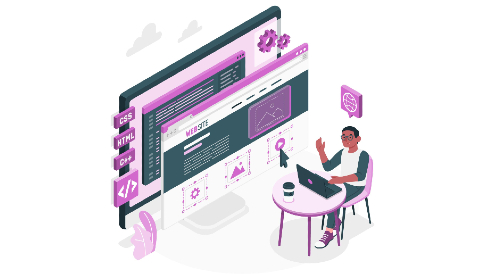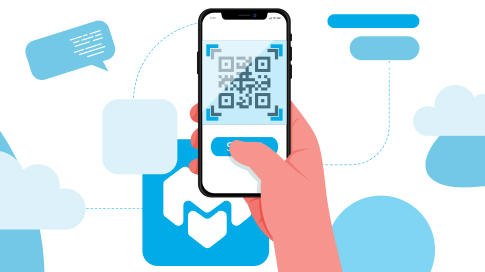Usability Testing – Where & How To Begin
Have you ever seen any elderly person struggling with a smartphone while trying to make a simple phone call? Certainly, you have, and this problem lies in the usability of Smartphones. They are not designed for elderly people; the same goes true with some websites. There are countless websites with overcomplicated interfaces and features that even tech-savvy people struggle to browse them.

Actually, the mindset of the designers creates this issue. Most web designers feel that their job involves only designing an interface, making it look great, and adding content. But the truth is that unless we invest in usability tests, our websites will always lack the killer appeal.
What Is Usability Testing?
The definition of ‘Usability testing’ can be something like this – it is a technique where a product is evaluated by users who have never seen the product before. This is a simple practice where certain people are asked to perform specific tasks on a website for the first time.
The tasks can be anything from sending a mail from the Contact Us page to purchasing a product from an eCommerce website.
While these people are performing the assigned tasks, someone has to watch over their moves to identify the problems that they face. There is also a need to take notes of all these issues. Moreover, watching people browsing your website and performing specific tasks can help you get an idea of how your targeted audience is going to interact with your website. A clear understanding of the users’ behavior and the possible interactions between the website and the users are some of the takeaways of a usability test.
Evaluation of Usability Testing Outcomes
Once a usability test is done, the outcome needs to be examined carefully to determine the future course of action. You can’t leave your website out in the cold if the result shows that the users were struggling to perform even simple tasks like Locating the Contact Us page or figuring out the purpose of a page within a specified period of time.
If the majority of users fail to recollect the most conspicuous feature of the home page or fail to fill out a form correctly, it clearly indicates that there is something seriously wrong with the existing website’s usability. Sometimes, it is not just the numbers that you should concentrate on; you need to consider the emotional impact on users as well.
Do they look stressed out after completing the tasks, or do they feel confident with the tasks that they have just performed? These are some questions that we need to ask ourselves while conducting the test.
Usability Testing Methods
There are several different ways to conduct usability tests. Since it is impossible to cover them all, here we are going to give a round-up of the most prominent usability testing types.

#1 Ask a Professional
This is probably the easiest way to perform a usability test. In this case, you hire a usability expert, and he is then asked to examine the website. It is possible to conduct the tests remotely. The tester needs to do different tests to determine the issues with the existing website, and after everything is done, you will pay him – it is that simple.
In some cases, the process can be automated. Yet, very often, automated results are not muchly detailed compared to other forms of usability testing.
#2 QA Session
This is another form of usability testing. For this type of usability test, people are asked direct questions to determine how they have interacted with the website. Sometimes, users are shown a web page for a few seconds, and then they need to answer the questions pertaining to that page. The biggest benefit of this QA session is that you will get concrete answers from the users.
#3 DIY Test
In this usability test type, users are asked to test a website in a realistic environment. Specific scenarios are created, and the participants need to go through them one by one to simulate the behavior of real-life users. In this test, the observers will see how people interact with their website in real-time, which will offer them some vital clues as to where and which changes are required to make the website more user-friendly.
#4 Hallway Testing
This is a usability test type where you pick some people randomly and ask them to test the website. This is a quick kind of test that lets you get an idea of how users are going to react when they first bump into your website. This method is ideal for those websites that target all groups of people regardless of their age, sex, or geographical location.
This test should be done at the initial stage of the website design and development process because, after hallway testing, you might have to tweak the interface more than once. Come up with a prototype, test it, and then go back to the drawing board to make the required changes. This is how hallway usability testing works.
#5 Remote Usability Testing
This usability testing method is ideal for websites with targeted audiences from different parts of the world. As evident, bringing people from around the globe to your office to perform specific tasks does not make sense as we can use the Internet conveniently. Thanks to some remote applications like TeamViewer, we can perform remote usability testing. This is a convenient and cost-effective method.
Neither location nor time matters in remote usability testing, as you will be able to keep an eye on every single move of the participants without creating any obstructions. You will get to see how the participants interact with different elements of your website, where they are making mistakes, and which elements are causing the most distractions. Armed with the knowledge, you will then make changes in the design and structure of the website so as to offer a seamless browsing experience for your website visitors.
The best thing about this testing method is that the participants perform the tasks in their familiar environment, which means the chances of being influenced by outside factors are slim.
Factors to Consider While Conducting Usability Testing
Running a usability test is easier said than done. If you do it wrong, it can have a devastating impact on the performance of your website. Imagine a situation where people have little understanding of how to perform the most basic tasks online and are asked to evaluate a website. You can understand what will happen if you accept their suggestions – a perfect recipe for disaster.

So, there are certain things that you need to follow carefully to get a better result this time around:
#1 Let Them Behave Normally
Well, accept that most participants don’t feel confident while beginning a test as they know that someone is keeping track of their actions. This makes them feel nervous, and then they start behaving abnormally. If you fail to assuage their fear, the result could be counterproductive. You might have to guide them at the initiate stage. Don’t spill all the beans rather give them some hints.
#2 Don’t Be Too Rigid
Don’t try to control your participants completely. If you ask them to follow the guidelines strictly, you might end up missing something unexpected or exciting. You might forget to add something important to the task list; therefore, it makes sense to grant some freedom to the participants. The interruption will make them nervous, and they might always look up to you for some guidance, even if the task is very simple. In short, you need to cut them some slack. Otherwise, you will not get a full image of the testing.
3# Don’t Mention the Website
This is not even advice rather it is common sense. You should not mention the name of your website to the participants because that would make them cautious. Instead, you need to ask them to test multiple websites to get honest feedback.
#4 Do Usability Tests on Competitor Websites
We should not limit the scope of the usability test to a single website rather we need to extend the scope to the competitor websites. This will help us to understand what our competitors have done right, and then we can embrace those positive aspects in our design to create something unique and impressive.
#5 Ask them To Perform Some Mandatory Tasks
Sometimes, it might happen that things start going out of hand. If you allow too much freedom to the participants, they might end up wasting their time on unimportant things. Therefore, you need to give them a set of tasks to perform within a given period of time and then observe how these people perform.
So, we can safely say that usability testing can be done in a myriad of ways, but you need to follow some steps to be able to get the best result.




Leave a Reply